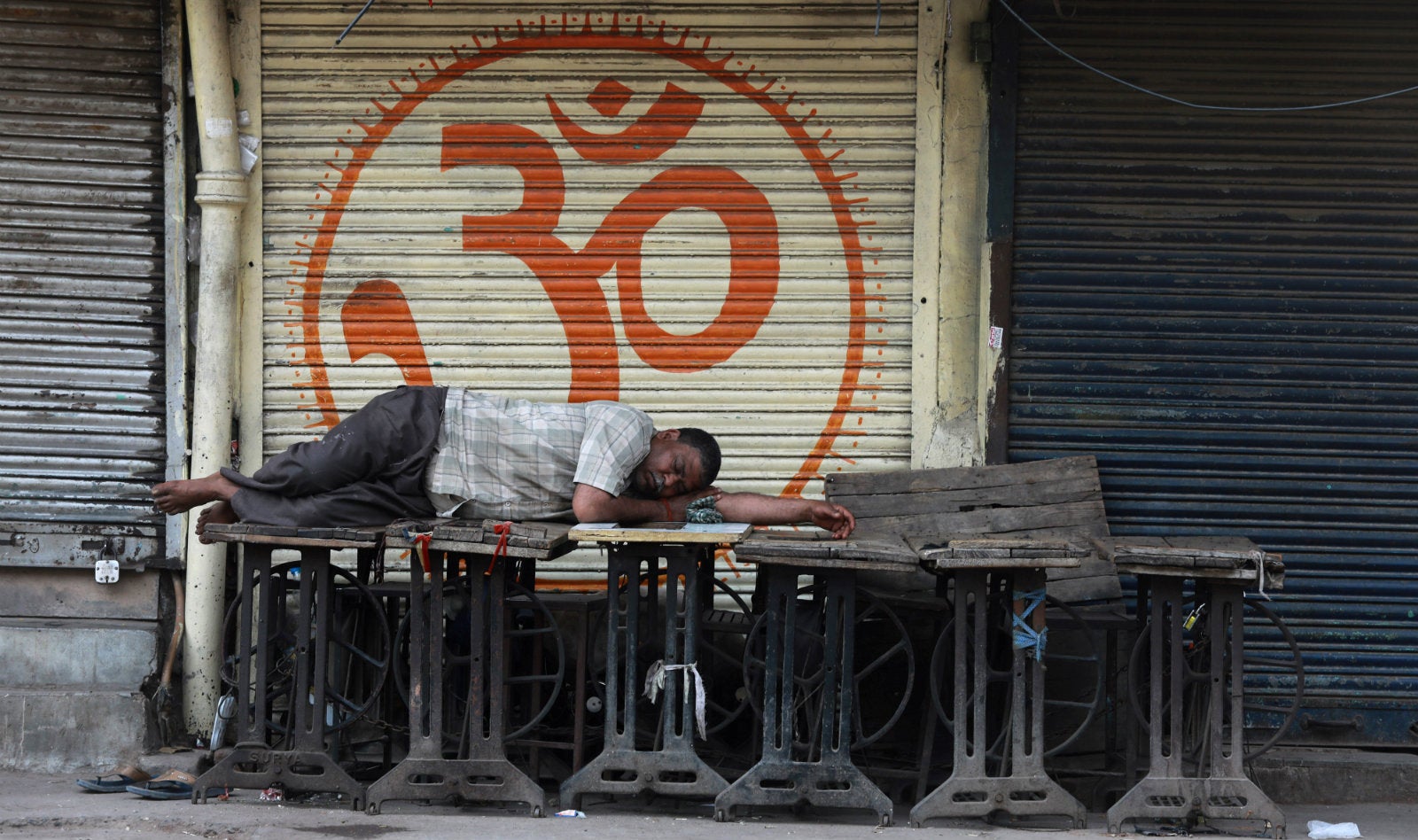India may escape a recession, but coronavirus will slow down growth further
Rating agencies, both global and domestic, are unanimous that the Covid-19 pandemic will be an economic tsunami for India.


Rating agencies, both global and domestic, are unanimous that the Covid-19 pandemic will be an economic tsunami for India.
Even though the country may not slip into a recession, unlike the Eurozone, the US, or Asia-Pacific that have stronger trade ties to China, analysts believe the impact on India’s GDP growth will be significant.
India is currently in the midst of a 21-day lockdown, that began on March 25, to contain the spread of the coronavirus. The fallout of the move will spill over to financial year 2021, which begins on April 1.
On March 26, finance minister Nirmala Sitharaman announced a $23 billion package aimed at cushioning the disruption. India’s central bank joined the fight a day later with sharp interest rate cuts and a slew of unconventional measures aimed at making credit available to beleaguered businesses.
In India, GDP growth is already at a decadal low and any further dent in economic output will bring more pain to workers who have seen their wages erode in recent times.
Here’s what major ratings agencies forecast for India’s GDP growth:
Moody’s
Moody’s Investors Service, on March 27, sharply slashed its projection for India’s GDP growth in calendar year 2020 from 5.3% to 2.5%. The markdown was the second in 10 days and came after prime minister Narendra Modi announced the 21-day lockdown.
In its Global Macro Outlook 2020-21, Moody’s cited severe liquidity constraints in India’s banking and non-banking sectors as a hinderance to growth.
The agency’s forecast for the global economy was even more stark—a contraction of 0.5% in the ongoing financial year.
Crisil
In a note on March. 26, domestic ratings agency Crisil slashed its base case GDP growth forecast for India in financial year 2021 from 5.7% to 5.2%. It warned that there are further downside risks if the pandemic is not contained by April-June 2020, or if it spreads rapidly in India, affecting domestic consumption, and investment.
The pandemic is a threat bigger in scale than the global financial crisis of 2008 as it “not only slams the brakes on economic activity and jeopardises financial stability, but also brings with it enormous human suffering not seen in decades,” Crisil said.
Standard & Poor’s
Earlier, global ratings agency S&P had estimated India’s GDP growth for financial year 2021 at 6.5%, which it now expects to fall to 5.2%. In the following year, growth is likely to be 6.9%, compared with 7% estimated earlier.
More starkly, it said that a recession across Asia-Pacific is now guaranteed due to disruptions in China. The effect of policy measures aimed at supporting vulnerable sectors and workers will “wane the longer the crisis lasts,” S&P said in a note on March 23.
Fitch
In its Global Economic Outlook 2020, released on March 20, Fitch Ratings said India’s GDP will grow at 5.1% in financial year 2021. This is a downward revision of its earlier estimate of 5.6%.
Besides the Covid-19 pandemic, Fitch also cited risks from the failure of Yes Bank. The financially beleaguered private lender was recently taken over by a consortium led by the State Bank of India under the aegis of the Reserve Bank of India (RBI).
“The overall financial system remains burdened with weak balance sheets, which will limit any upside to credit growth despite policymakers’ efforts in recent months to ease stress,” Fitch said.
CARE Ratings
Mumbai-based CARE estimates that growth in the January-March 2020 quarter could plummet to 1.5-2.5% “as the usual ramping up of production due in the year end could not be implemented due to the shutdown.” Its earlier forecast was a 4.7% growth in the period.
However, the real impact of the 21-day lockdown will be felt in the first quarter of financial year 2021, it said. “With two-thirds of the impact being passed on to the April-June quarter. This can potentially lead to a de-growth in GDP.”
To prevent GDP from contracting in the first quarter, there has to be a lot of recouping in “the 10 weeks following the shutdown.” GDP can grow at 3% if there is a recovery of losses and the lockdown ends on April 14. Two factors that have to aggressively drive this recovery are government expenditure and the banking sector which should augment credit to all the sectors. Growth could be lower at 1.5-2% if this does not happen.